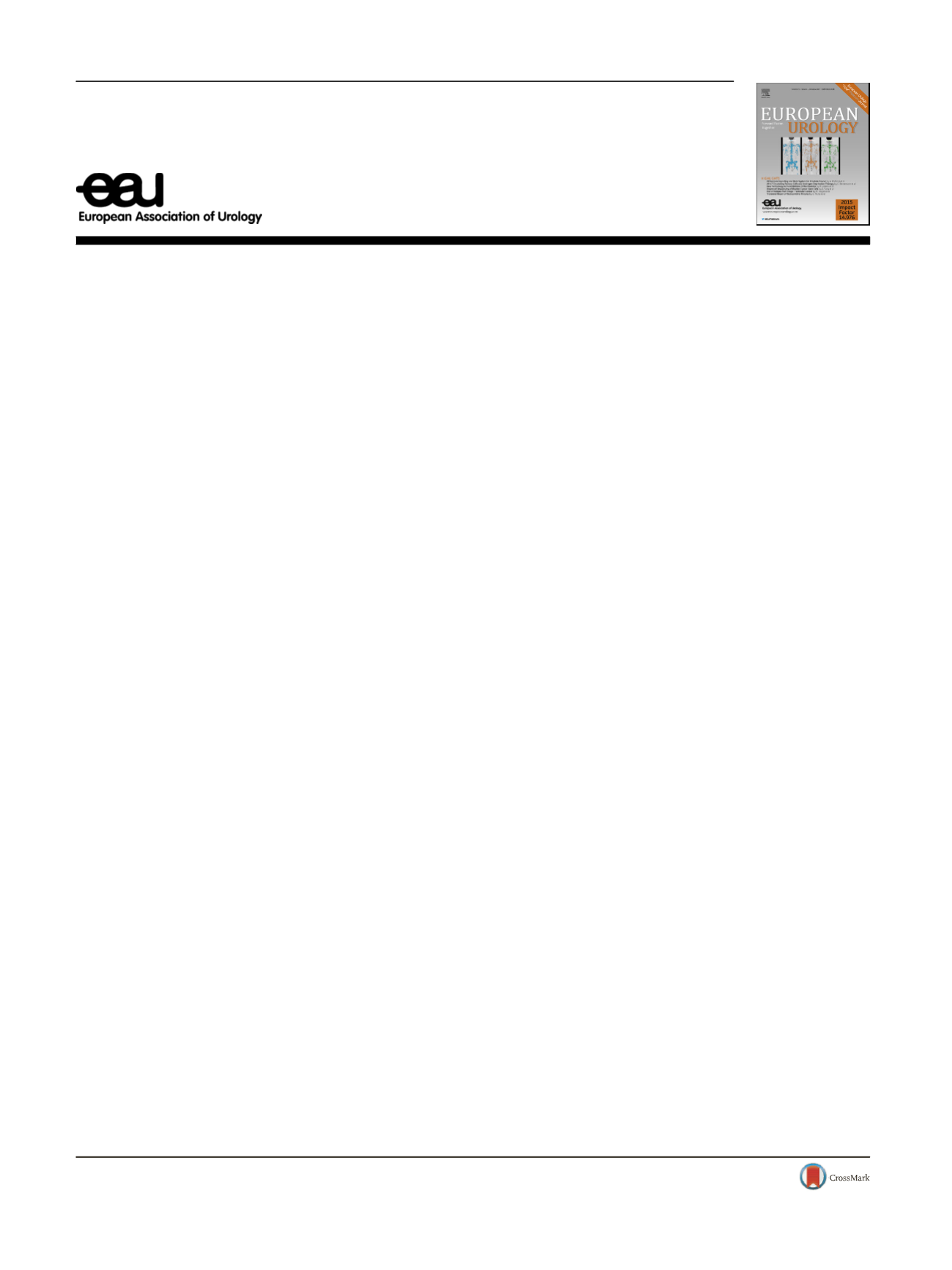

Platinum Priority
–
Editorial
Referring to the article published on pp. 910
–
917 of this issue
Balancing Risks in Prostate-specific Antigen Recurrence:
The Fox Versus the Hedgehog
Bridget
[1_TD$DIFF]
F. Koontz
*Department of Radiation Oncology, Duke Cancer Institute, Durham, NC, USA
There are clear dichotomies in prostate cancer
—
men aged in
their 90s who have been living with prostate cancer for 20
[2_TD$DIFF]
years, and 55-
[3_TD$DIFF]
year-old men who die within 3
[2_TD$DIFF]
years of
diagnosis. But much more heavily populated than these
extremes is the space between
—
where it is difficult to
predict who will do well with minimal intervention and
who will progress, allowing an opportunity for early
intervention to change disease trajectory. Since we are
unlikely to accurately predict every patient's outcome, how
do we balance the risks and benefits of overtreatment with
those of undertreatment?
One outstanding controversy in the management of
prostate cancer regards the role of adjuvant and salvage
radiotherapy after prostatectomy. Three randomized trials
show improvement in biochemical control with
early
postoperative radiotherapy, one also showing an overall
survival advantage
[1 – 3]. However, these studies have their
criticisms and ultimately, clinical practice has favored
ultrasensitive prostate-specific antigens (PSAs) and delivery
of early salvage for many patients. Prospective clinical trials
are pending, but large retrospective studies suggest that
generally postoperative radiotherapy is more effective at
lower PSAs
[4], although low-risk cancers may be suitable
for a surveillance approach.
In this month's issue of
European Urology
, Dr. Gandaglia
and colleagues
[5]describe a new nomogram meant to
provide insight into the likelihood of prostate cancer death
in men with a persistently detectable PSA after radical
prostatectomy. This study provides additional evidence that
postoperative radiotherapy can reduce the likelihood of
prostate cancer death in men with highly aggressive
prostate cancer. The authors also note that some patients
had a low risk of prostate cancer death and could be
managed expectantly without immediate salvage treat-
ment.
While at first this report seems concerning in a
relegation of radiotherapy to a minority of men, with some
consideration I view it overall to be useful data when taken
in context. The specific question posed by the authors is
whether immediate radiotherapy for detectable PSAs is
necessary in all men. It is probable that many of the patients
in the
“
no radiotherapy
”
group eventually did receive
salvage treatment. In that case, this describes outcomes of
early versus late salvage. The data supports that in menwith
low-risk disease, early treatment may not be necessary and
PSA can be safely monitored, initiating treatment when PSA
begins to rise
—
active surveillance in the postoperative
setting. One possibility is that delayed radiotherapy is still
effective at curing the cancer and remission is achieved, but
the delaymaximizes urinary and sexual recovery. Another is
that these cancers are instead being managed long term by
salvage androgen deprivation. However, this latter expla-
nation carries another concern, which is that an endpoint of
mortality may be missing significant negative quality of life
factors if patients achieve freedom from prostate cancer
death by many years of hypogonadism.
Philosophers apply the quote
“
the fox knows many things,
but the hedgehog knows one big thing
”
by Greek poet
Archilochus to illustrate the different ways humans think; for
some all experiences can be seen through the lens of one
grand vision, and others for whom life cannot be simplified to
fit into one truth. Both have advantages and disadvantages.
But in prediction, the fox has an advantage as it is more
flexible and adaptable to newdata and alternate explanations
[6] .As we improve our science to provide more individual-
izedmedicine, wemust be careful not to oversimplify and put
E U R O P E A N U R O L O GY 7 2 ( 2 0 17 ) 9 18 – 9 19available at
www.scienced irect.comjournal homepage:
www.europeanurology.comDOI of original article:
http://dx.doi.org/10.1016/j.eururo.2017.06.001 .* Department of Radiation Oncology, Duke Cancer Institute, Durham, NC 27710, USA. Tel. +1 919 668 5213; Fax: +1 919 668 7345.
E-mail address:
bridget.koontz@duke.edu . http://dx.doi.org/10.1016/j.eururo.2017.07.0210302-2838/© 2017 European Association of Urology. Published by Elsevier B.V. All rights reserved.
















